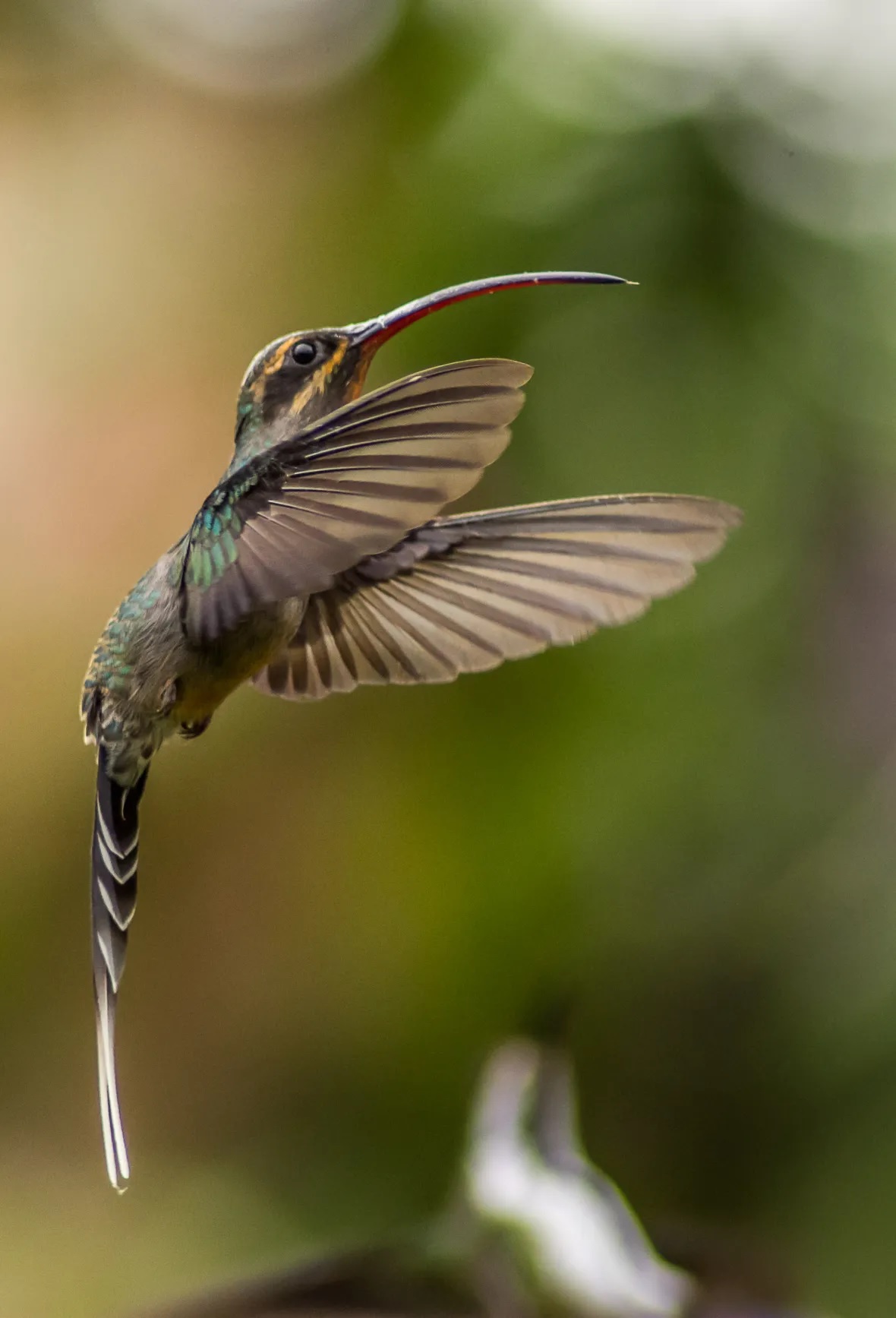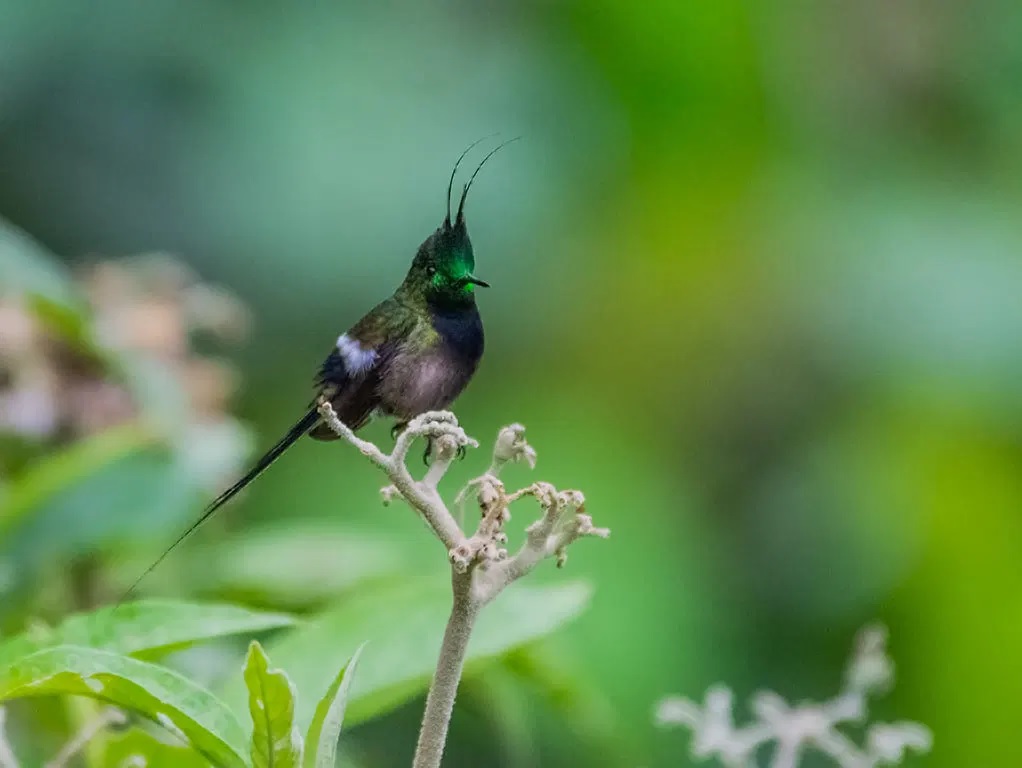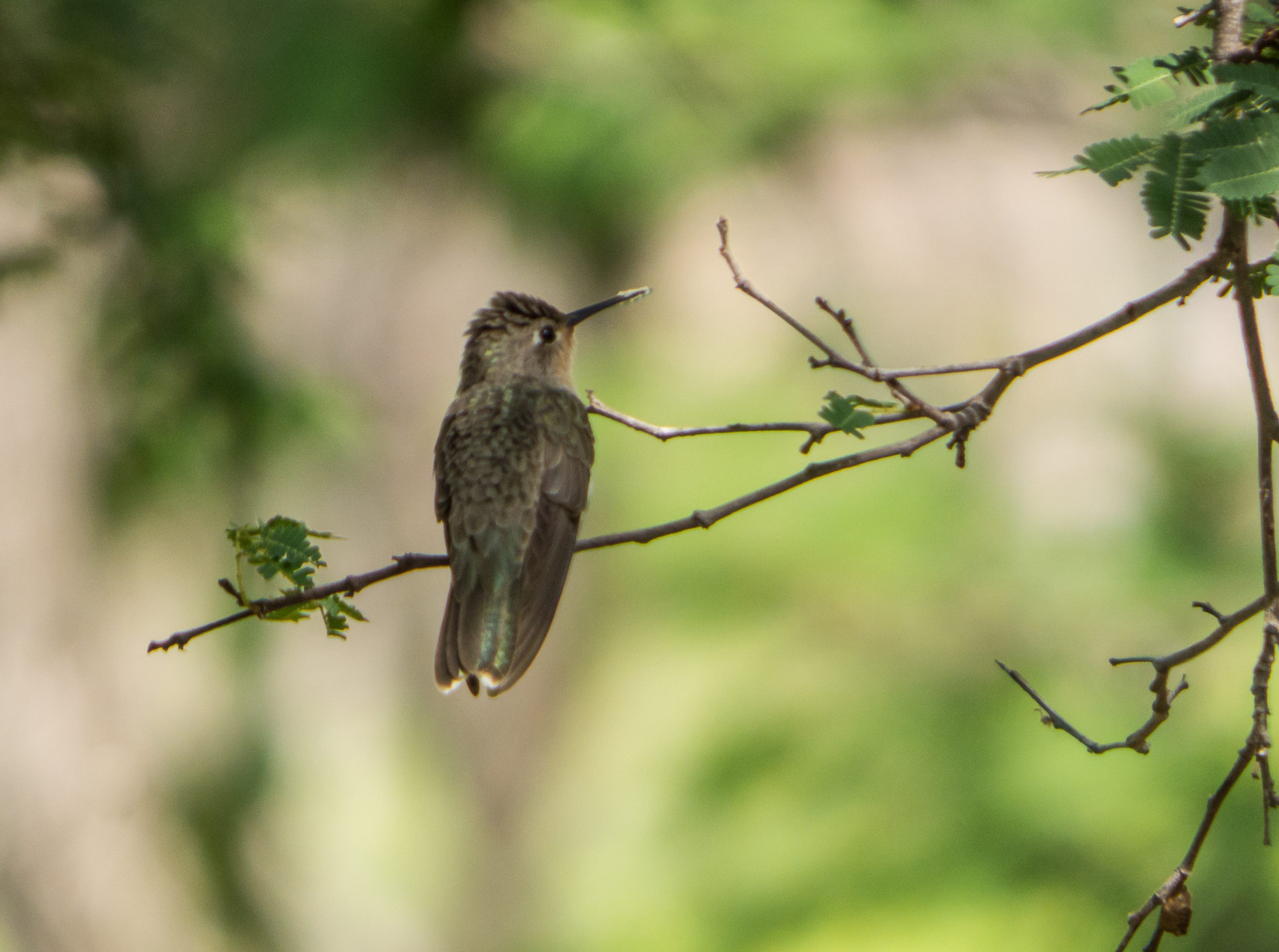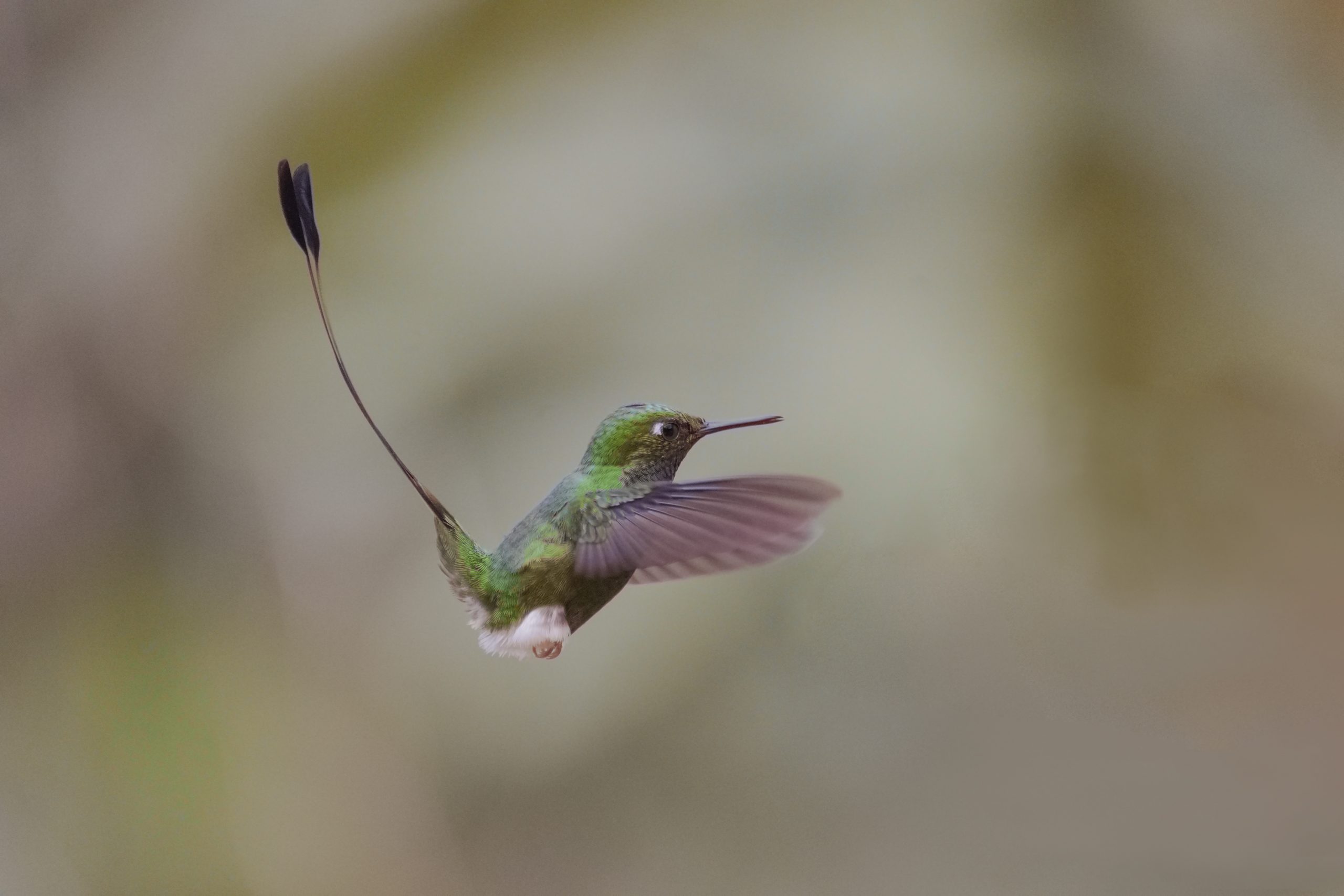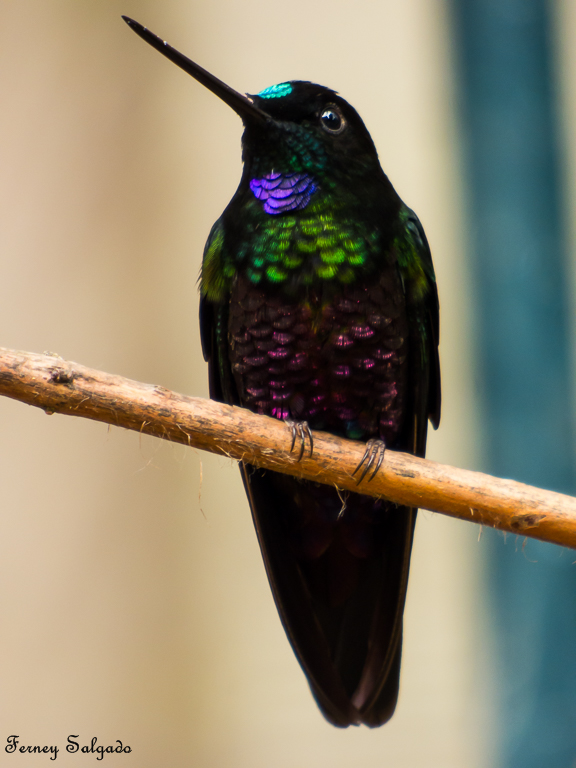The green hermit (Phaethornis guy) is a large hummingbird that is a resident breeder from southern Central America (Costa Rica and Panama) south to northern South America (north-eastern Venezuela and Trinidad, and the northern Andes of eastern Peru)

The Wire-crested Thorntail is a hummingbird of average size; although the female is similar it is of a much smaller size. It is distinguished by the long, filamentous crest of the male. It is a rare species in Colombia, much more frequent in the humid forests of Ecuador, yet little is known about its natural history.
The buffy hummingbird (Leucippus fallax) is a species of bird in the hummingbird family Trochilidae. This bird lives in dry forest and scrubland in northern South America where it feeds on insects and the nectar, flesh, and juice of cactus fruits.
The booted racket-tail (Ocreatus underwoodii) is a species of hummingbird. It is found in the Andean cordillera of Bolivia, Colombia, Ecuador, Peru, and Venezuela. A population also occurs on the Venezuelan coast. This is the only species in the monotypic genus Ocreatus.
It is a hummingbird of average size. Long and slender bill. Its tones vary between black and greenish black, passing through green and aquamarines. Its beautiful colors are appreciated in good daylight. Inhabitant of humid forests and gardens.
Hummingbird of average size. This particular hummingbird has a very short beak. Its tones range from blacks, through iridescent golds and greens. Long and forked tail. Inhabitant of humid forests.
The Black-throated mango is a common hummingbird on the edges of the jungle and close to natural water deposits. It is the most widely distributed species of the genus and its name Anthracothorax comes from the Latin roots Anthrax = coal and thorax = chest. The epithet nigricollis derives from the Latin roots niger = black and collis = neck.
Bar-crested Antshrike/ Batara de Lafresnaye / Thamnophilus multistriatus
Populations of this species are found mainly in Colombia and a small portion of northwestern Venezuela. Its name Thamnophilus comes from the Greek roots thamnos = bush and philos = lover of. The epithet multistriatus comes from the Latin roots multi = much and striatus = striated.
It is a conspicuous species that lives in dry areas mainly in stubble forests, cultivated areas and forest plantations. It feeds mainly on insects that it captures by jumping and exploring on the foliage, supplementing its diet with fruits and nectar. Its name comes from the Greek ikteros which means yellow, and its specific epithet nigrogularis means black throat, which comes from the Latin roots niger = black and gularis = neck.
Formerly classified in the genus Schizoeaca. It is a difficult to see bird with a fairly long tail that lives in the high Andean mountains from Venezuela to Peru. Its name Asthenes comes from the Greek and means weak or insignificant. The epithet fuliginosa comes from the Latin fuliginosus = sooty.
